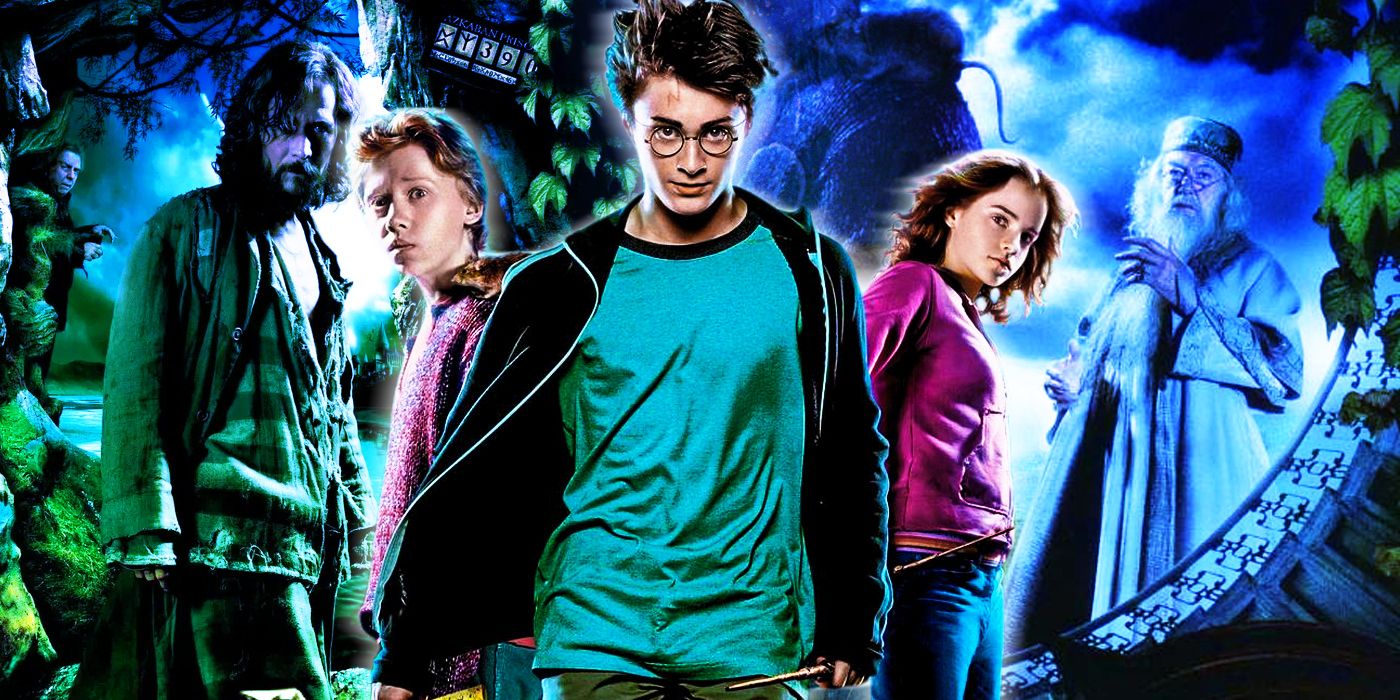Summary
- Alfonso Cuarón changes the franchise's formula in Harry Potter and the Prisoner of Azkaban, taking some liberties with the source material to shed new light on the movies to come.
- The movie touches on themes of adolescence and how Harry and his friends are forced to mature prematurely.
- Harry Potter and the Prisoner of Azkaban hints at the series' darker future, exploring the hopelessness and disorientation that takes over Harry's character arc.
An important landmark in the Harry Potter franchise is coming on June 4th, marking the 20th anniversary of Harry Potter and the Prisoner of Azkaban, the movie that helped pave the way for the rest of the series. The film follows Harry, Rony, and Hermione confronting adolescence in their third year at Hogwarts as mysterious foes from the past return. A dangerous prisoner escapes Azkaban and goes after Harry, prompting the chilling Dementors to patrol the school's grounds while an unspeakable evil silently lurks in the castle's shadows.
Regarded by critics as one of the best movies in the Harry Potter franchise, if not the best, Harry Potter and the Prisoner of Azkaban marks the moment Harry Potter movies take a distinctive dark turn. As the movie before Voldemort's return, the film does a great job of tying past and present while developing the arcs of many important characters. Fan-favorite characters such as Remus Lupin and Sirius Black make their first appearances in the film, contributing to a great Harry Potter movie that changed the franchise forever.
Harry Potter and the Prisoner of Azkaban Changed the Franchise's Formula
|
Where to Watch |
Max |
|---|---|
|
Metascore |
82 |
|
Tomatometer |
90% |
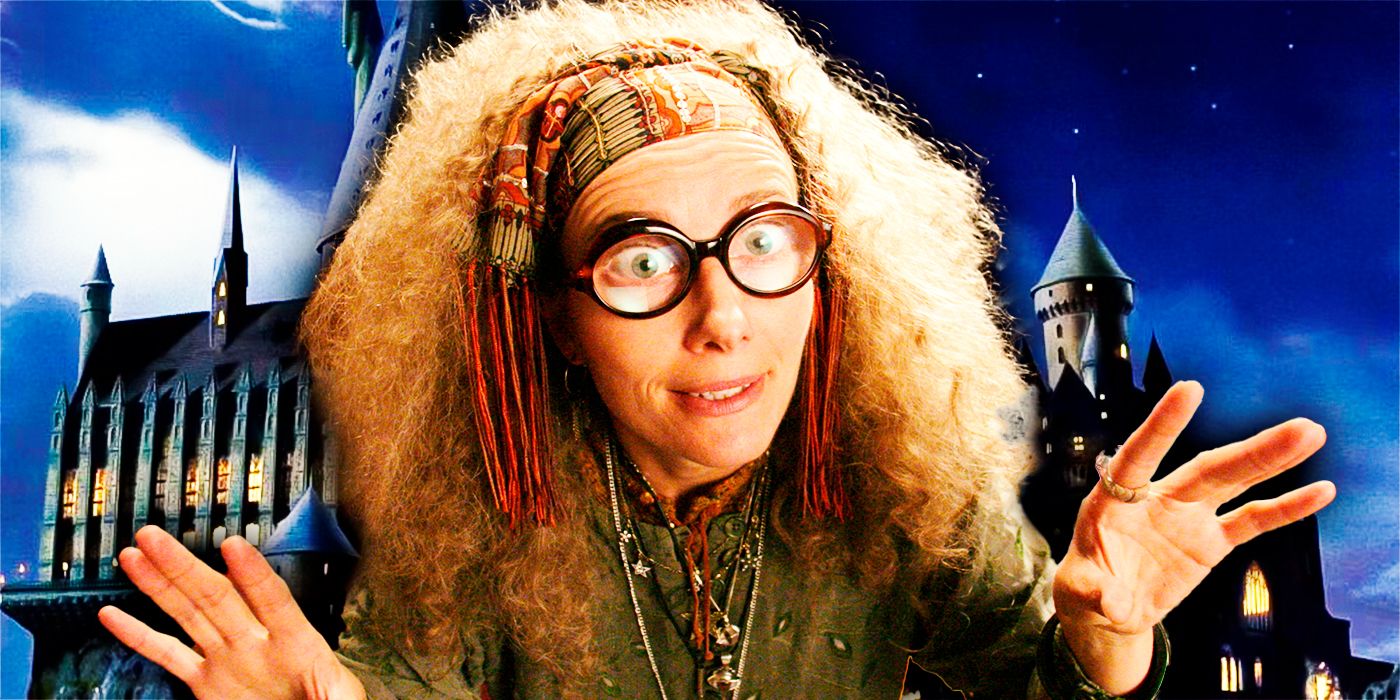
How Did Sybill Trelawney Become a Hogwarts Professor in Harry Potter?
The Harry Potter franchise has many characters with a unique history, and no other character exemplifies this best than Sybill Trelawney.The idea of bringing Alfonso Cuarón on board Harry Potter and the Prisoner of Azkaban might be one of the best decisions made by the movie franchise, as it enabled the story to find a welcoming, fresh tone. As the most popular Young Adult fantasy series of all time, Harry Potter improved some of the genre's best attributes: the transition from adolescence to adulthood, the school setting, the reliable mentors, and so on. On the other hand, the first books fell into off-putting cliches, one of them being a ready-made formula used in both Harry Potter and the Philosopher's Stone and Harry Potter and the Chamber of Secrets.
This formula followed a straightforward narrative course: compelling elements of Hogwarts activities are explored - Quidditch, Defense Against the Dark Arts lessons, new spells - until the school's routine is disrupted by an exterior threat. Harry and his friends somehow get involved. Secrets are revealed, and a culprit comes to light. Finally, Harry is forced to confront this threat and discovers the real culprit was someone else all along. He defeats an enemy, and Voldemort is weakened. Many of these elements return in Harry Potter and the Prisoner of Azkaban, but Cuarón makes sure to dissect them differently, leading the story towards an unexpected path: no wonder the movie is the most polarizing adaptation in the series.
It certainly helped that Harry Potter had Chris Columbus to follow the formula just like Rowling intended: it worked in the books, so it might as well work in the movies. The first two Harry Potter movies are by-the-book adaptations that faithfully adapt every major component introduced by Rowling. Columbus had a history of family-friendly movies before Harry Potter - Home Alone 1 and 2, Bicentennial Man - making him the perfect person to adapt the lighthearted section of the book series. But changes would be needed once Harry Potter got into its darkest moments.
Cuarón steps in to direct Harry Potter and the Prisoner of Azkaban, changing the formula of the first two movies and showing that there's space to innovate. There was nothing wrong with Harry Potter's initial formula: it helped the characters to evolve and gave space for worldbuilding to flourish. However, Harry Potter and the Prisoner of Azkaban is unlike the other books: it marks the first time Voldemort doesn't pose an immediate threat to Harry and his friends. This time, exterior forces surround Harry from unexpected places, setting the path for the darkness that takes over the next chapter in the story, Harry Potter and the Goblet of Fire. It was no easy task for Cuarón to reformulate the franchise's approach midway through the Harry Potter movie series, but his creative vision effectively shed new light on the movies to come.
Cuarón's Artistic Vision Creates a Life of its Own in Harry Potter and the Prisoner of Azkaban
- Cuarón had the cast write book reports on their characters so that he could better understand them.
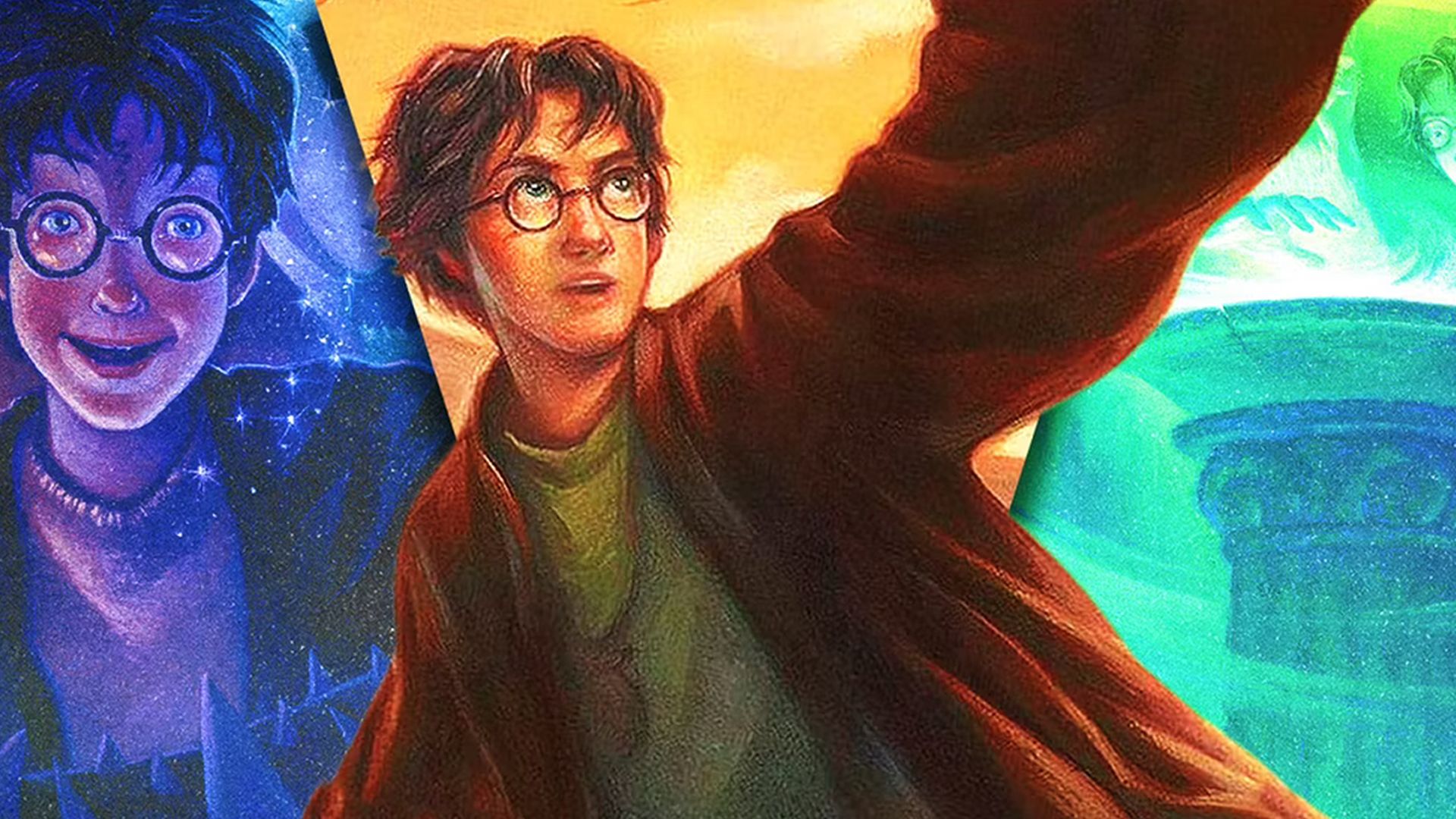
Every Harry Potter Book, Ranked
The Harry Potter novels are beloved by many fans. But from Sorcerer's Stone to Deathly Hallows, which one is the best of the best?The first two Harry Potter movies are great adaptations, but there's an argument to be made that they are merely visual tours of Rowling's books, taking viewers by the hand across a theme park ride. Harry Potter and the Prisoner of Azkaban is still an adventure mystery blockbuster, but in the hands of Cuarón, the images create a life of their own. The movie tells the viewers many key things simply by the way scenes are structured and shot. Every scene featuring Harry Potter alone feels intense and anxiety-inducing: not seldom is the character engulfed in pitch-black darkness, highlighting his vulnerability to terrors that are after him. At the beginning of Harry Potter and the Prisoner of Azkaban, when Harry sits on the sidewalk to wait for the bus, the night itself comes alive to warn him something wicked lurks in the shadows.
Harry Potter and the Prisoner of Azkaban's best attributes come from the movie's ability to explore well-known elements of the fantasy genre and build something completely different with them. This movie has it all: werewolves, time travels, prophecies, plot twists, and shape-shifting wizards. Each of these elements acts separately for a specific purpose until they all collide in one hard-boiling moment of clarification. The lingering disorientation that permeates the narrative suddenly rewards viewers with all the answers they are looking for.
It's genuinely baffling that Cuarón managed to pull off the climax of a blockbuster like Harry Potter and the Prisoner of Azkaban by simply having a bunch of characters pointing figures at each other, but that's the way it is. One may ask why other fantasy movie adaptations fail to find Harry Potter's success even with great names and big budgets attached to the projects. There's a single scene that answers this question pretty clearly. Unlike other fantasy movie series, Harry Potter features some of the best British actors of their generation, giving their soul and heart to their given roles. Cuarón explored these powerhouse performances like no other director did in the Shrieking Shack sequence. In this scene, Harry, Ron, and Hermione confront Lupin, Sirius, Snape, and Pettigrew in search of the truth. The rest is history.
The movie adaptation of Harry Potter and the Prisoner of Azkaban sets fire to what's "anticlimactic" on the surface. It makes viewers look at the book in a whole different way. It might be difficult to accept, but Harry Potter and the Prisoner of Azkaban is, essentially, a middle-of-the-road book. It barely moves the main storyline forward: every narrative choice is centered around bringing the past into focus. Its power lies in the characters and how they interact with each other. The climax is pretty much the main characters wrestling for information, and it works.
The atmosphere of the movie is fear-inducing, constantly on the verge of a new layer of mystery. However, the fact that Harry Potter and the Prisoner of Azkaban doesn't take major steps in Harry Potter's overall story doesn't mean nothing happens in the film. The movie works as a powerful story of self-discovery: by the end of it, the characters are completely in a completely different place from where they were when the movie first started.
The Hopelessness of Harry Potter and the Prisoner of Azkaban Takes Over the Rest of the Series
Alfonso Cuarón's Highest-Rated Movies, According to IMDb:
|
Movie |
Release Date |
IMDb Rating |
|---|---|---|
|
Harry Potter and the Prisoner of Azkaban |
2004 |
7.9 |
|
Children of Men |
2006 |
7.9 |
|
Gravity |
2013 |
7.7 |
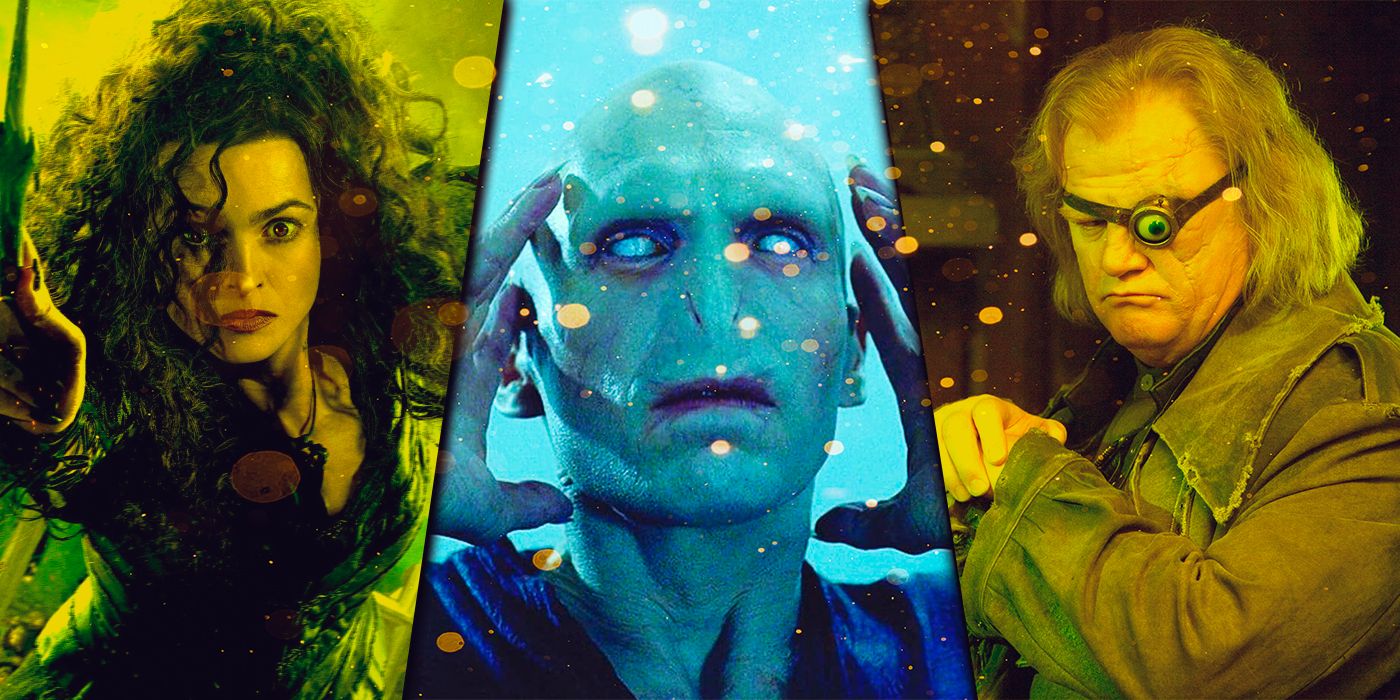
The 25 Strongest Witches And Wizards In Harry Potter
From Death Eaters to the young pupils of Hogwarts, Harry Potter showcases the most powerful witches and wizards in the Wizarding World.Although Ron and Hermione continue to act as loyal companions and help Harry in whatever way they can, Cuarón understands that this is supposed to be the loneliest Harry Potter movie. The cold color palette chosen by Cuarón offers a major tonal shift to the visual identity of the franchise, adding texture to Harry's isolation. The allegories to adolescence couldn't be clearer. Like a teenage boy who doesn't understand the changes his body is going through, Harry feels lost in the face of overwhelming darkness: he doesn't know why Dementors are targeting him, fails to comprehend what Sirius wants with him, and fate itself shows its claws in the form of a grim.
All Harry wants in Harry Potter and the Prisoner of Azkaban is to finally feel understood, which explains why he was so moved when he thought the Patronus Charm was cast by his father. Little did he know it was his version of the past who cast the spell: Harry was still on his own. Hope and love are the guiding threads of Harry Potter's overall story, but ironically, most of the series is filled with hopelessness. It goes without saying that Harry Potter only gets darker after Harry Potter and the Prisoner of Azkaban, and the movie does a great job of hinting at the darkness that's to come.
In Harry Potter and the Prisoner of Azkaban, the charming Hogwarts School of Witchcraft and Wizardry is completely overtaken by darkness. Dangerous enemies such as huge Trolls and Basilisks haunted the school corridors in the previous movies, but it's only in the third movie that evil feels palpable. Cuarón's visual motifs manage to convey Harry's disorientation throughout the movie and tie it to the mystery that keeps the story in motion.
Before Harry Potter and the Prisoner of Azkaban, Hogwarts was presented as a comfortable place to be, a genuine safe haven, even when it wasn't safe at all. It's by deconstructing familiarity that Cuarón effectively removes the aura of solace that envelops Hogwarts. It's by having Dementors inspecting the school grounds and students being forced to sleep in the Great Hall that the viewer understands how serious the threat is. It's by having Harry secretly learn a new spell in order to protect himself from uncontrollable fears that fans witness how he's forced to mature prematurely. The scene where Lupin teaches the students how to use the Riddikulus spell pretty much sums up what Harry Potter and the Prisoner of Azkaban is all about: eventually, Harry's deepest fears will catch up to him. And he must be ready to face them.
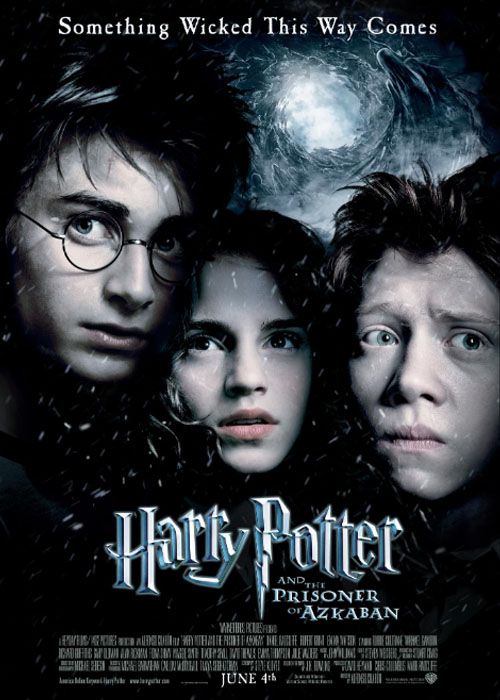
Harry Potter and the Prisoner of Azkaban
Harry Potter, Ron and Hermione return to Hogwarts School of Witchcraft and Wizardry for their third year of study, where they delve into the mystery surrounding an escaped prisoner who poses a dangerous threat to the young wizard.
- Director
- Chris Columbus
- Release Date
- June 4, 2004
- Cast
- Gary Oldman , David Thewlis , Daniel Radcliffe , Emma Watson , Rupert Grint , Robbie Coltrane , Timothy Spall , Maggie Smith , Michael Gambon , Richard Griffiths , Fiona Shaw , Alan Rickman
- Runtime
- 142 minutes
- Main Genre
- Adventure

